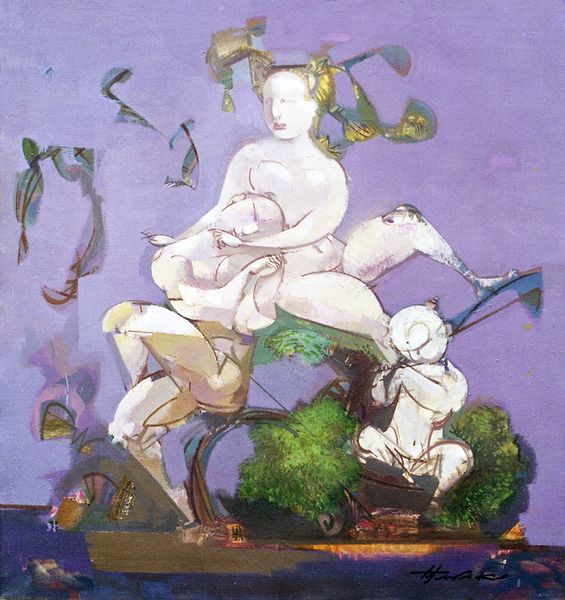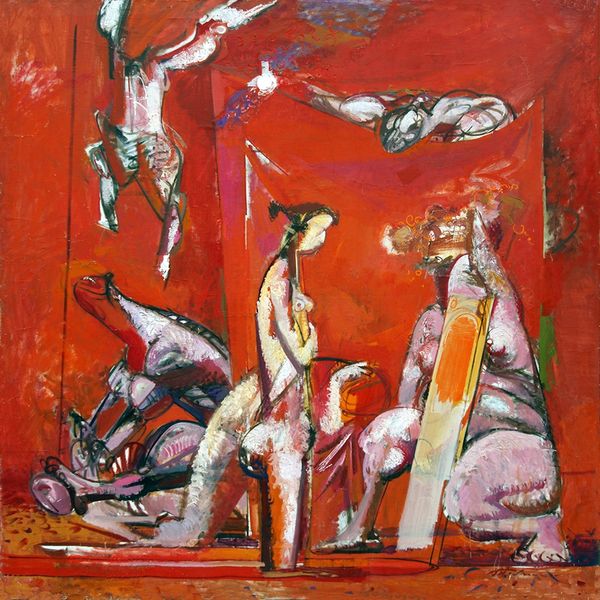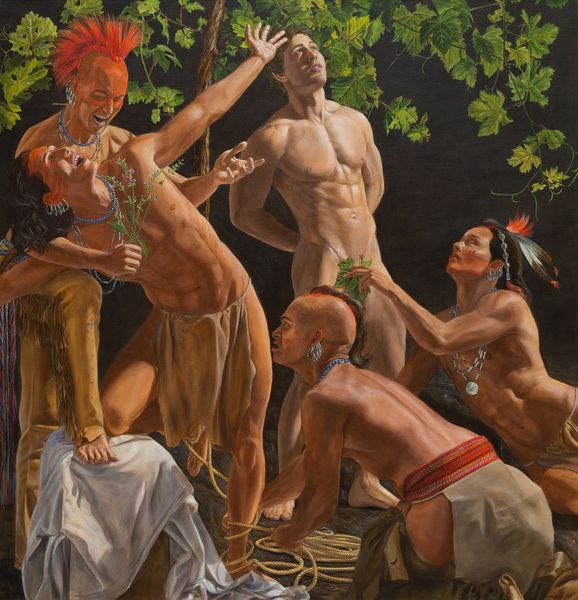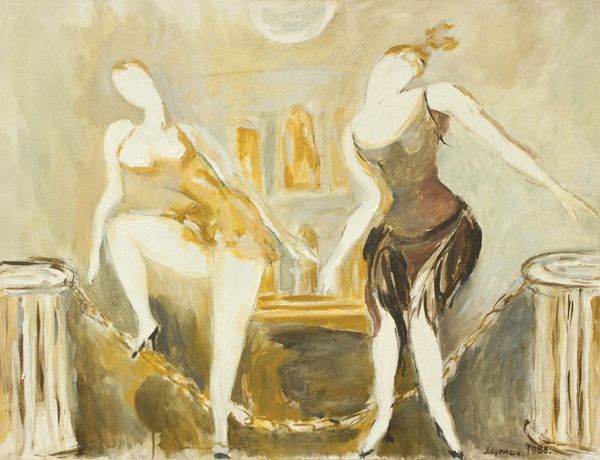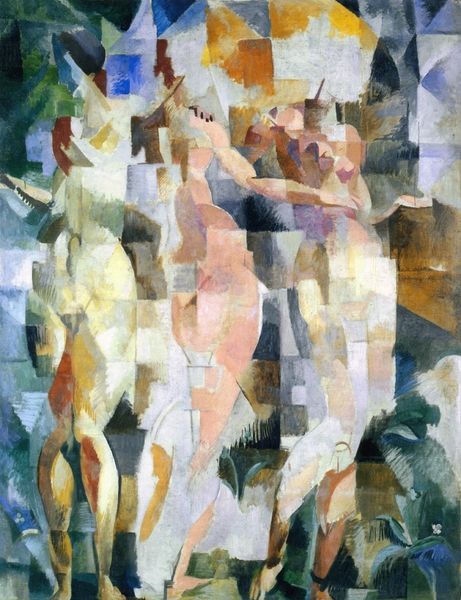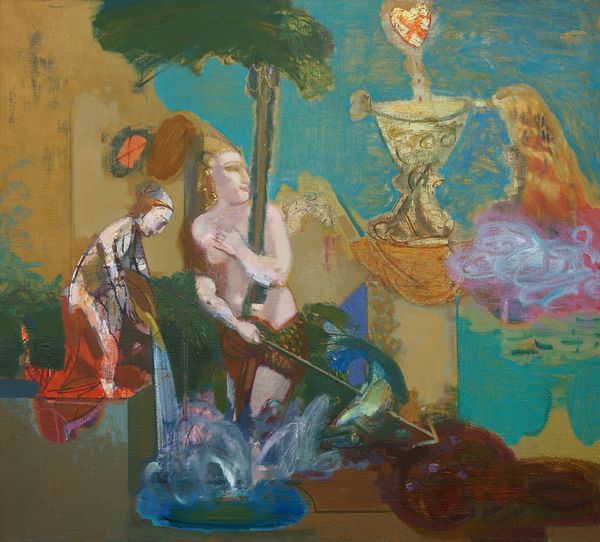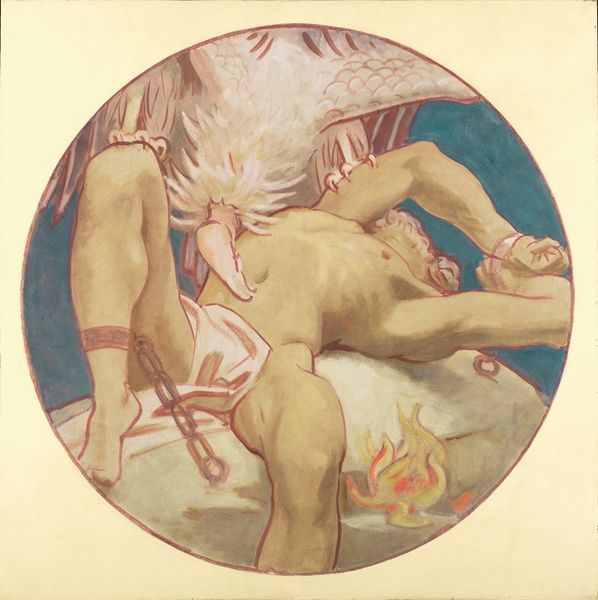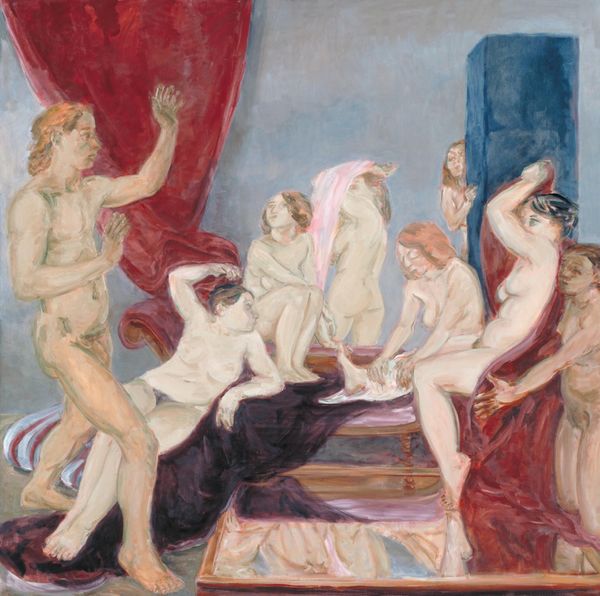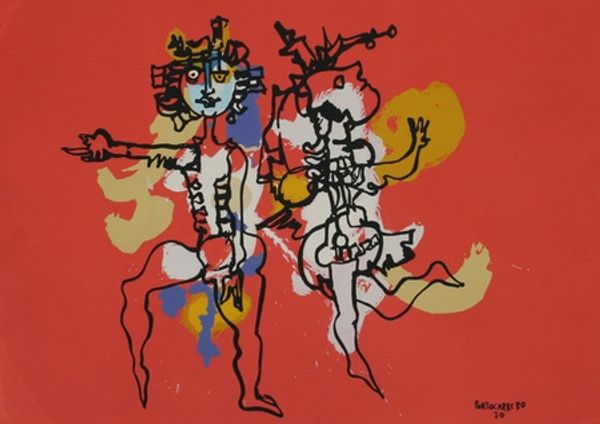
painting, oil-paint
#
gouache
#
fantasy art
#
painting
#
oil-paint
#
fantasy-art
#
figuration
#
modernism
Dimensions: 90 x 85 cm
Copyright: Vasiliy Ryabchenko,Fair Use
Curator: The piece we're observing is Vasiliy Ryabchenko's "Games with Characters" from 1991, an oil on canvas work employing gouache. It immediately evokes classical sculpture but rendered with an almost crude, modern hand. Editor: I get a dreamlike quality from the blurred edges and almost cartoonish figuration. It's playful, despite the seemingly classical, stoic subjects. Is this meant to be irreverent? Curator: Well, consider the socio-political context. This piece emerged just before the collapse of the Soviet Union. The adoption of what looks like classical subject matter but with the distortion we see could be Ryabchenko responding to the existing cultural environment and institutions of art, specifically the state-sanctioned art academies. Editor: Interesting point. And the visible brushstrokes and choice of gouache layered on oil lend it a very tactile quality, making the "classical" forms less precious. The act of production itself—the layering, the imperfect rendering— becomes prominent. Curator: Precisely. It's subverting expectations of idealized forms by foregrounding the material process. We see a flattening of pictorial space here. There's also the possible political underpinnings: are these "characters" symbolic, allegorical references to the ruling figures in this pre-collapse moment, intentionally presented in a less than flattering manner? Editor: It's thought-provoking how the material choices enhance that. The almost hurried application of paint contrasts so starkly with the history typically associated with these types of figures. Was Ryabchenko actively reacting against the system? Curator: One can certainly speculate that there's a commentary about the political structures, or perhaps even art historical institutions that were in place. By using these accessible, almost base, materials he is disrupting the historical perspective we might attach to works with these specific images. Editor: Ultimately, viewing it now, decades later, allows us to reflect on those cultural shifts and on the continuous evolution of art’s role within evolving societies. Curator: Agreed. Ryabchenko prompts us to consider not only what we see, but the forces that shape what we come to value in art and how historical moment and accessible mediums might be interwoven.
Comments
No comments
Be the first to comment and join the conversation on the ultimate creative platform.

